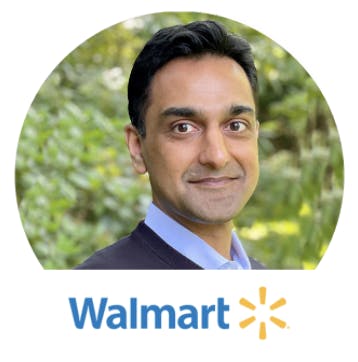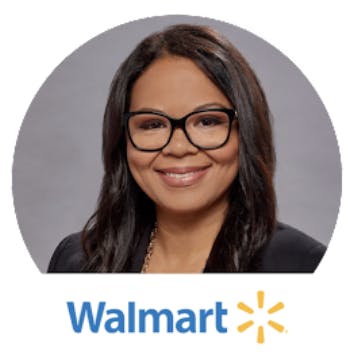The 2021 Global Market: Fall Experience was a five-day virtual product discovery experience held October 18-22, facilitated by ECRM and powered by RangeMe. The goal of bringing suppliers and retail buyers across categories from around the world to meet face-to-face virtually was happily fulfilled. Plus, attendees got to join live educational sessions from top leaders and experts in the consumer packaged goods (CPG) and retail industry.
From Gen Z to wellness, several recurring trends were highlighted during the educational sessions that are bound to continue influencing the retail industry. Here are seven to take note of:
Gen Z, the “Zoomers”
Generation Z was a hot topic during Global Market, as retailers have started recognizing their influence on consumer spending. Born in 1997 and after, Gen Z is the youngest current generation around the globe and the most racially and ethnically diverse generation in U.S. history.

In the Independent Retail: Your Path to Gen Z and Millennial Market Share educational session, guest speaker Jasmine Glasheen explained how each generation shops differently. Gen Z cares about what they are buying, and old-school marketing tactics (billboards, catalogs, television ads, etc.) don’t entice them. Despite common opinions held by retailers, Gen Z does stay loyal to brands. She further explained that more than 70% of Gen Z claims they influence family purchasing decisions on groceries and household goods like furniture.

In the Fireside Chat with Musab Bulbale, How Does Walmart Win in Beauty, Bulbale explained that Gen Z is the future that needs to be addressed in retail today. Walmart can see that the generation is incredibly attracted to retail, which is why they’re committing more seriously to sustainability and investing in suppliers who want to be a part of this journey.

During the session Giving the U.S. Consumer a Seat at Your Table, Julie McPeek and Kate Jones of Provisor Marketing described how the U.S. is a melting pot with 332 million people full of cultural connections. Just over half (51%) of their presentation survey respondents are first- or second-generation Americans, reflecting the generational range present within the U.S.
With the focus on Gen Z’s spending influence, retailers and brands need to prioritize their expectations, wants, and needs.
Going digital

It’s no surprise that the world is going through a digital transformation and the retail industry is no different. The CPG industry has rapidly studied, adopted, and implemented digital aspects such as e-commerce, social media, apps, online advertising, and more.
In the Retail Deep Dive with Walmart, Maya Bowie, Vice President of Health Merchandising for Walmart, discussed what’s ahead for Walmart and the growth of their company. While they expect some normalcy in the future, they are focusing on digitalization and extending their digital services online and in-store.

During Thought Leadership with CVS, Brian Eason, VP of Consumer Health & Wellness at CVS, expressed their plans to invest more time and money toward digital retail efforts.

Petco’s Health & Wellness Transformation session, led by Nick Konat, Chief Merchandising Officer at Petco, detailed Petco’s plan to grow their digital presence through their app. On the Petco app, users can track their pet’s grooming schedule and upkeep and connect veterinary medical records creating a more holistic approach to their Petco experience.
With digital being top-of-mind across the board in retail and CPG, retailers and brands must think about their digital presence with consumers to stay ahead.
Omnichannel retail and OmniMerchants
An OmniMerchant business integrates the different methods of shopping available to consumers from online, brick and mortar, to mobile and beyond. Having an omnichannel framework is more important now than ever, as consumer purchasing behavior spreads wide and far.
Walmart’s Maya Bowie explained how the retailer finds success through its omnichannel organization, which allows them to reach a lot of consumers. The biggest takeaway from her time working at Walmart is the massive scale the company has created through its multiple shopping channels such as its website, app, and retail stores.
Konat also explained how Petco is shifting towards an omnipresent business, which they see as a significant growth driver, especially with their repeat buying opportunities. Petco’s aim toward integrating its products and services together to create a one-stop-shop for pet owners has paid off throughout the pandemic.
Broadening the horizons of where consumers can purchase products, like on social media or in-store and online, will only increase your bottom line.
Brand storytelling
Step one of starting a business is knowing exactly what your brand is and the why behind your vision. Long story short, if you aren’t a good storyteller, retailers and consumers won’t be interested in picking up your book…or in this case, product.

Perhaps the most familiar speaker at Global Market, Kevin O’Leary, also known as Mr. Wonderful from Shark Tank, had a lot to say on this topic during his fireside chat. Can you tell your brand story in 30 seconds or less? Can you tell it in ways that are compelling? To O’Leary, that’s how you acquire customers (and famous investors) successfully. Your story must also come with data. “Data is the new oil—you have to have it,” O’Leary explained. Investors and retailers need to know what is selling immediately in order to manage their capital.
Provisor Marketing’s McPeek and Jones also emphasized the importance of brand positioning with U.S. consumers. What creates an emotional connection with a customer is your brand name, tagline, and story. Emotional connections lead to purchases and brand loyalty.
Have you added your brand story to your RangeMe profile yet? Retail buyers are looking for it.
Direct-to-consumer brands
Direct-to-consumer or DTC, refers to businesses that sell products directly to consumers, bypassing any third-party retailers, wholesalers, or other middlemen. DTC brands and marketing have been gaining major traction over the past couple of years.

When discussing product trends within CVS, Eason mentioned that DTC brands were a huge drive for their business throughout the pandemic. CVS will continue sourcing suppliers that can support a DTC model.
When addressing the question What Are The Blind Spots Hindering Today’s Supplier & Retailer Partnerships? Dan Mack, the Founder and Managing Director at Mack Elevation, explained that in today’s market, suppliers have plenty of options when it comes to how they sell their products, from Amazon, retail, and especially DTC through their e-commerce site. Although online shopping has spiked, delivery or BOPIS is not effective in the long run and the cost is put on the retailer’s back. As a result, retailers need to rely heavily on their supplier partners to help remedy this issue by offering a DTC model.
While DTC isn’t for everyone, offering drop-ship capabilities still gives brands major brownie points.
Responsible retailing
Once again, sustainability leads the way for the retail industry, and it’s no surprise that a lot of our guest speakers expressed their retail journeys toward conquering global warming. As a supplier or buyer, if sustainability isn’t a top priority, you will fall behind.

Wendy Liebmann, the Founder, CEO & Chief Shopper at WSL Strategic Retail, discussed this movement toward sustainability in retail during her educational session, The Big Business of Well. For example, retailers such as ASDA are taking measures to make their store layouts sustainable with tactics such as refill stations for shampoo, conditioner, water, and so on.
Petco believes the health of pets starts with the products they source. Konat said that by the end of 2025, Petco aims to have 50% of their products come from sustainable sources. Responsible manufacturing, sustainably sourced ingredients/materials, sustainable packaging, and animal welfare protection are all factors they look for in supplier partners.
To learn more about why and how retailers are cracking down on sustainability, go here.
Wellness in everything
Wellness was already gaining momentum before the pandemic, and the last two years has only brought it into sharper focus. Drastic changes to how we live and work, the constant threat of illness, and economic uncertainty has driven us to the goal of improving all aspects of our well-being.

According to Liebmann, the term wellness now encompasses financial security, healthier choices, non-traditional wellness paths such as natural remedies, genetic testing for preventive measures, and going to the doctor less, as well as buying products that make our lives easier and our mental state healthier.
In a fireside chat with Andrea Harrison, VP of Beauty & Personal Care for CVS Health, she highlighted CVS’s commitment to beauty health and mental health. One of the biggest initiatives they have implemented is Beauty Mark, a label that discloses altered images and encourages the elimination of altered imaging on supplier branding. Their vision is to avoid young girls from comparing themselves to unrealistic images within their stores. “We wear our heart on our images,” Harrison states.
How has your brand or retail store adjusted to the new meaning of wellness? Let us know in the comments!
COVID-19 has obviously been an accelerator of several of these retail trends that were already underway. However, global and retail economies are still expected to see strong growth in 2022 and beyond. The industry is constantly changing, and it’s changing fast. ECRM and RangeMe are excited to continue connecting suppliers and retailers worldwide, no matter the obstacles thrown our way.
Are you interested in staying up to date on future events, education, and retail opportunities? Follow our social media platforms below!

